This area is a bit confusing & takes some imagination to understand. But we’ll figure it out together.
My first dilemma was pinpointing which neighborhood it belongs to. The only major online source of info about this area is about the barrio of Floresta. Confusingly, the boundaries of Floresta are just outside where this enormous housing project was planned… but their online description of this area was appreciated nonetheless.
Comparing the original plan with what is currently there, I wandered around trying to make sense of what had happened. Plans had definitely gone astray. The original CNCB project was to build an enormous series of chalets, subdividing what would now be considered 5 or 6 city blocks. This map was all I had to go on:
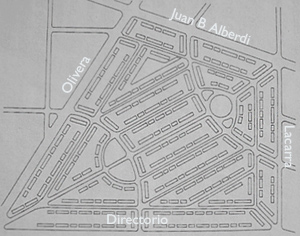
50 units were in place by 1923, & in 1926, 77 more units were added… 127 houses total. Those units cover a small but distinct area easily visible on a city map in the northwest corner (the area with no green space). Nothing like the planned, kite-shaped barrio existed. Keep in mind that the image below was not available in 2007 when this post was originally published. The city government’s map was amazing & everyone talked about it, but it wasn’t as detailed as it is today:
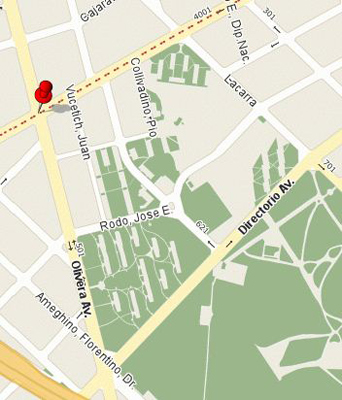
Unlike the Barrio Cafferata houses, most of these seemed intact from the 1920s. The idea of owning a chalet in Buenos Aires is appealing & at least four were for sale. I could have called to find out the current asking price, but I’m not that much of an investigative reporter 🙂 The chimneys are spectacular:
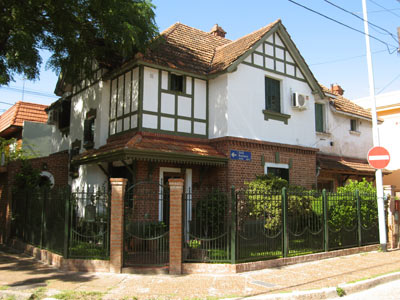
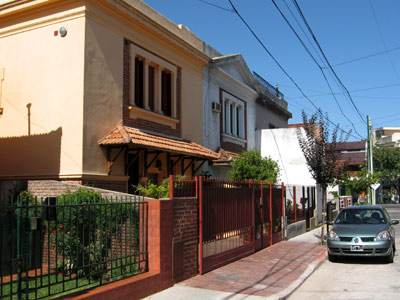
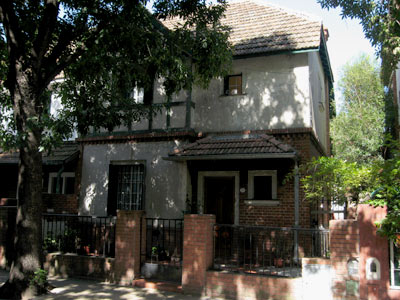
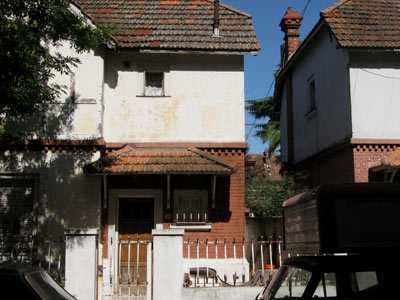
The rest of the area is occupied by four other housing projects from much later eras, with styles from the 1940’s to the 1970’s. Also present are a large brick church, a sports club & no less than three technical schools. Apparently since the city government already owned the land, every time a housing project was suggested, it was put in what was supposed to be all of the Barrio Alvear.
It’s a bizarre little bit of decades of housing projects built in a relatively small area. But it’s no surprise that the original project was never completed. Argentina relied heavily on Europe for importing construction materials, & World War I slowed down all government-sponsored projects. Construction costs more than doubled from the amount originally projected (from $60/m2 to $140/m2). Final costs for houses went from $7,000 to $15,000… very much out of league for workers whose monthly income was $120. Affordable housing costs averaged 25-30% of monthly salaries, & the CNCB wanted to sell units at $5,000. The math just didn’t work out.
Sources: Boletín del Honorable Consejo Deliberante, 1939 & Diccionario de Arquitectura en la Argentina, published by Clarín.
Direct link → Master list of all Housing for the Masses posts.
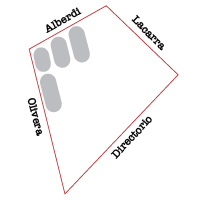
hola me encanto saber que no era la unica que queria saber la historia de mi barrio y el de mis abuelos y padres vivimos ahi primero desde 1945 mas o menos y luego en 1997 en los chalets espero que te llego lo veo ahora en el 2021 jaja envio este link vas a encontrar un poco mas de como eran las casas del Barrio alvear si es que ya no lo encontraste un abrazo. Graciela